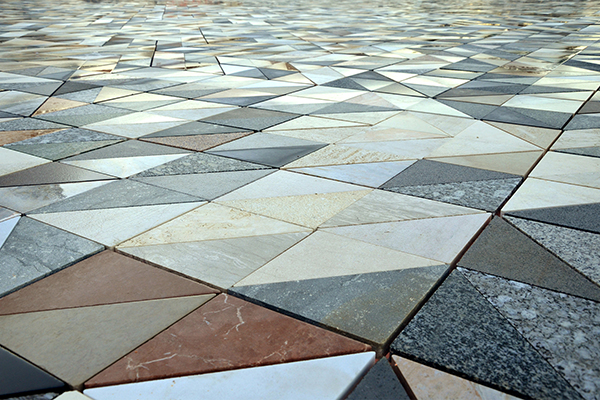The Field of Stones of Italy. The urban carpet at the foot of the Shrine of Redipuglia
DOI:
https://doi.org/10.15168/xy.v4i8.160Keywords:
geometric structure, light, square module, stone decorationAbstract
The project concerns the construction of a large area that measures the two‒dimensional extension of a square surface of twenty meters on each side. The quadrangular structure is a symbol of definition and delimitation, enclosure and code of a conceptual order, figure of the earth, of arrest, of the isolated instant, of immanence. It brings together the characters of the regular figure with the perpendicularity and being the simplest modular structure, through its nine knots it can be fragmented into similar figures with infinite progressions that can be found in the numerous ‘tributes’ that many artists of every age and place have dedicated to this figure. The resulting carpet thus becomes the natural geometric delivery of the paths that convey all the main directions of the context. The square figure restores formal dignity to a space with undefined margins and scarcely related to the surroundings. Inside this square are placed 8,047 stones, assembled according to a geometric motif of triangular decomposition of the square shape, referable to the stone decorations made according to the ancient opus sectile technique, reworked at the beginning of the twentieth century by the Bauhaus school in pictorial works and weaving, mainly in the work of Anni Albers. In the third dimension, the square assumes a dense stratification of elements that configure interferences and divisions in overlapping geometries. The project was carried out through a dry assembly on a support structure embedded in the ground, a system consisting of a series of steel supports, suitably sized to support the computed loads, surmounted by a metal grid on which the individual stones were fixed by chemical anchors. Each stone is separated from the others so as to allow the filtering of the captive light below, between the joints of the stones with variable width. At night the carpet is transfigured assuming the configuration of the delayed and complementary geometry of the joints between the stone triangles, offering the visitor an area‒space marked by the faint passage of the light trails on the surface layer.


